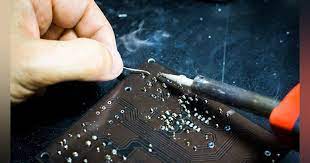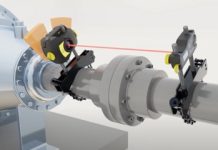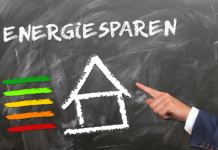Soldering is a critical process in PCB component assembly, especially in high-level PCB manufacturing. While hand soldering is common, advanced machinery is crucial for high-level PCB production due to the miniaturization and complexity of modern PCB components. Among the challenges faced in PCB manufacturing, one major issue is solder skip. This article aims to explain what solder skip is and how to prevent it.
What Is Solder Skip?
Solder skip refers to the situation where solder is either not applied correctly or is spilled over the surface mounting pads during the soldering process. These skips are undesirable because they create an interruption in the connection between the pads and the PCB components. Essentially, solder skips are similar to joints in surface mounting components that haven’t been properly soldered to the printed circuit board.
Quality soldering is critical for ensuring the overall quality of the PCB. It plays a vital role in connecting various printed circuit board components to enable the efficient functioning of the PCB.
Solder skips can occur in PCB manufacturing processes where both robots and human operators are involved in soldering. Whether due to inattention or inefficiency, solder skips can also be caused by the soldering process. When solder skips occur, it can result in open circuits, rendering some or all PCBs non-functional. It’s crucial to conduct thorough inspections of PCB joints to avoid such issues.
Preventing Solder Skips
Preventing solder skips involves ensuring that solder properly penetrates the pads during the soldering of surface-mounted components onto the PCB. Sufficient time should be allocated to allow the solder to wet the interface properly. Solder skips occur when the solder fails to wet the interface and form a joint. Modifying design strategies and equipment is an efficient way to address this issue.
Soldering issues can also arise when components are wave-soldered to the PCB, particularly for challenging formats like SOICs and PLCCs. The high surface tension of molten solder makes it difficult for solder waves to reach the corners, resulting in soldering issues. Manufacturers address this challenge during PCB design by using waves with high turbulence levels and proper attack angles.
In summary, solder skips are common but can be prevented by strictly adhering to the above-mentioned preventive methods.
Precautions and Tips for the Soldering Process
To ensure effective soldering and avoid issues like solder skips, consider the following precautions and tips:
Tips:
- Keep the soldering surface clean.
- Use solder with high electrical conductivity.
- Ensure robust mechanical strength in PCB joints.
- Check for loose connections.
- Choose a reliable solder for the soldering process.
Precautions:
- Ensure your soldering gun has a stand.
- Avoid touching a heated soldering gun, as it can cause burns.
- Position your face at a safe distance when using a soldering gun.
- When removing bridging effects in PCBs, do not touch the solder; use the soldering gun or other appropriate tools.
- Set up a soldering area that keeps people out of harm’s way.
Other Soldering Issues
Apart from solder skips, other soldering issues can occur in PCB manufacturing. These include:
- Cold Joints: Cold joints appear lumpy and dull and may not be reliable. Cold joints are the result of incomplete solder melting and can lead to unreliable connections. They are primarily caused by uneven SMD components, inappropriate wave heights, or flux accumulation under the PCB.
- Solder Balling: Solder balling occurs due to moisture accumulation on PCBs from the water vapor generated during soldering. This issue typically arises during reflow or wave soldering processes. Solder paste printing, oxidized components, and incorrect reflow temperatures can contribute to solder balling.
- Excessive Solder: Excessive solder is the result of an overabundance of solder applied to PCBs during wave soldering. Too much solder can adversely affect the PCB’s functionality. Excessive solder can be caused by conveyor belt speed and soldering quantity.
- Overheated Joints: Overheated joints can occur if the soldering iron is set at a high temperature. It’s essential to maintain a clean joint and pad and ensure the right temperature settings to prevent overheating.
- Solder Flags: Solder flags are essential for a proper connection, but they can be inefficient and insufficient. The causes of solder flags include uneven flux application, oxidation of PCB components, and solder control issues.
- Solder Discoloration: While solder discoloration may seem cosmetic, it can be frustrating. Discoloration can occur due to various reasons, such as using different flux materials or higher soldering temperatures during the soldering process. It can be addressed by adjusting processing parameters.
In conclusion, to achieve high-quality PCB manufacturing, it’s vital to understand soldering techniques and apply them efficiently. Solder skips and other soldering issues can be prevented by following best practices, adhering to safety precautions, and addressing the root causes of these issues during the PCB design phase. Using waves with high turbulence levels and the right attack angles can help ensure that soldering is done correctly.
Conclusion
Soldering is a crucial process in PCB manufacturing, and solder skips can lead to faulty connections. To prevent solder skips and other soldering issues, it’s essential to follow best practices, pay attention to solder quality, and maintain proper equipment and design. Quality soldering not only ensures the reliability of PCB connections but also contributes to the overall effectiveness of electronic devices. By being vigilant and proactive in addressing soldering issues, PCB manufacturers can maintain the quality and performance of their products, ensuring the satisfaction of their customers.













